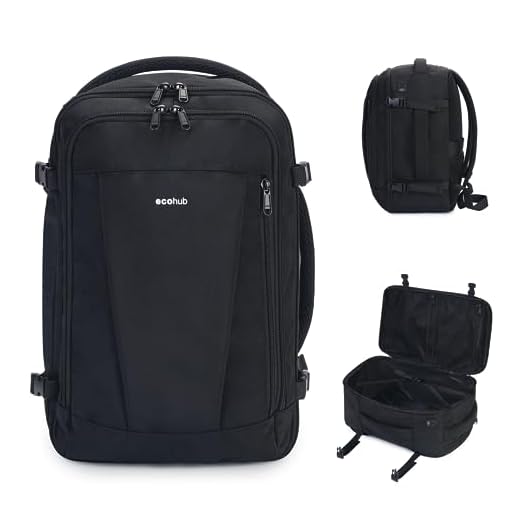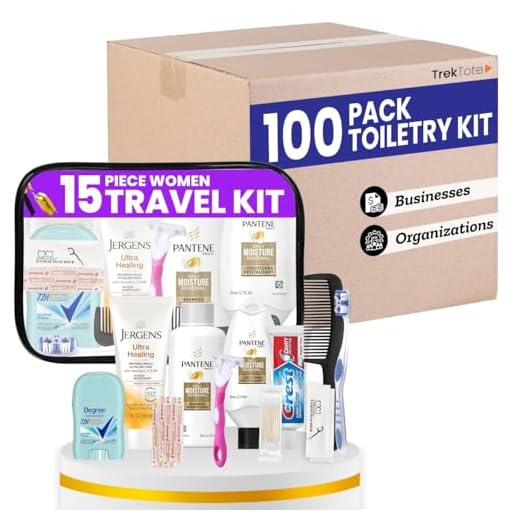





Travelers are permitted to bring a maximum of one personal item onboard that fits within specified dimensions, typically 18 x 14 x 8 inches. This could include a purse, backpack, or laptop bag. Ensure it fits comfortably under the seat in front of you, maximizing your convenience during the flight.
Items like liquids must adhere to the 3-1-1 rule: containers should not exceed 3.4 ounces (100 milliliters) and must be placed in a single quart-sized, clear plastic bag. Every traveler is limited to one such bag, facilitating expeditious security checks.
Essential electronic devices like laptops, tablets, and smartphones are permitted. However, these must be removed from your bag during screening. Batteries larger than 100 watt-hours require prior declaration, and spare lithium batteries should be packed in your carry-on, not checked baggage.
Sharp objects, including knives and scissors with blades longer than 4 inches, are prohibited. On the contrary, items like nail clippers and disposable razors are allowed. Familiarizing yourself with specific restrictions can aid in a seamless boarding experience.
Fruits and vegetables, along with a range of food items, are also subject to regulations, which may differ by destination. For international flights, it’s prudent to review customs regulations regarding fresh produce.
With these guidelines in mind, ensuring a stress-free travel experience is attainable. Being prepared not only expedites your passage through security but also enriches your overall journey.
Items Permitted in Cabin Storage
Electronics such as laptops, tablets, and smartphones are permissible but must be placed in an accessible area for screening. Chargers and power banks, under specific wattage limits, are also permitted. Ensure that all devices are powered on during inspections.
Personal Care Products
Toiletries remain allowed if they are in containers holding no more than 3.4 ounces (100 milliliters). These should be packed within a single, quart-sized clear plastic bag. Items such as toothpaste, shampoo, and conditioner must adhere to this guideline.
Food and Beverages
Solid foods like fruits, sandwiches, and snacks can be included. Liquid items are subject to the same 3.4-ounce rule and must also fit into the aforementioned plastic bag. Consider purchasing beverages post-security screening to avoid restrictions.
Liquids and Gels: Understanding the 3-1-1 Rule
For transporting liquids and gels, adhere to the 3-1-1 guideline: each container must not exceed 3.4 ounces (100 milliliters), all containers must fit inside a single quart-sized clear plastic bag, and only one bag is permitted per traveler. This rule applies to personal items such as toiletries, sauces, and beverages.
Container Specifications
Ensure that containers are accurately labeled and resealable. Non-compliant items will be subject to confiscation. Consider purchasing travel-sized products, or transfer larger quantities into smaller containers to meet these requirements.
Special Exceptions
Certain items are exempt from standard restrictions, including medications, baby formula, and breast milk. These must be declared at security checkpoints. For added convenience, evaluate options like the best luggage repair los angeles for any repair needs prior to traveling.
Lastly, check regulations ahead of departure, as guidelines may vary by airport. Searching for suitable protective gear? Consider investing in the best windproof cantilever umbrella for your trip.
Prohibited Items: What You Must Leave Behind
Sharp objects including knives, scissors, and razors are strictly prohibited. Keep these items at home or in checked bags. Firearms and ammunition are also not permitted; ensure they are stored safely before travel. Explosive substances, such as fireworks and flares, cannot be taken onboard. Additionally, self-defense items like pepper spray are banned.
Don’t attempt to bring large batteries or power banks exceeding specified watt-hour ratings; they pose safety risks. Hazardous materials including bleach, spray paint, and certain cleaning agents should remain outside. The following table summarizes critical items that cannot be taken:
| Item Category | Examples |
|---|---|
| Sharp Objects | Knives, scissors, box cutters |
| Weapons | Firearms, ammunition, stun guns |
| Explosives | Fireworks, flares, explosives |
| Defensive Items | Pepper spray, self-defense keychains |
| Hazardous Materials | Bleach, corrosive cleaners, paint |
| Large Batteries | Power banks over 100Wh |
Maintain awareness of these restrictions to facilitate a smoother passage through security checkpoints.
Electronics: Guidelines for Laptops and Tablets
To facilitate screening, laptops and tablets must be easily accessible. Remove these devices from bags when directed during security checks.
- Devices larger than a smartphone need to be placed in a separate bin.
- Ensure all electronic items are charged; security may require them to be powered on.
- Protective cases are allowed, but consider using soft sleeves for easier transport.
- Consider limiting the number of devices; primary items are often sufficient.
For hygiene or maintenance tips, check out this link on how to clean cats ears with q tips.
Be aware of potential restrictions on oversized electronics. Check specific airline regulations for any additional guidelines.
Food and Beverages: What Can You Bring Onboard?
Solid food items can typically be taken onboard without restriction, including fruits, sandwiches, and snacks like chips or granola bars. Pack them securely to avoid spills or damage during transit.
For liquids and gels, adhere to strict regulations. Each container must not exceed 3.4 ounces (100 milliliters), and all items must fit in a single quart-sized bag. Examples include yogurt, sauces, and salad dressings. Check for any specific restrictions based on your destination.
Beverages purchased after passing through security can be brought onboard. Ensure you’re aware of any limits imposed by individual airlines regarding serving sizes and alcohol.
Homemade food is welcome, but should be properly sealed to maintain freshness and comply with any health regulations. Be cautious with items that may spoil, such as dairy products.
Special dietary items, like baby food or medical necessities, often have additional allowances. Documentation may facilitate smoother passage through security.
Check local guidelines and airline policies for any additional restrictions or allowances related to food items specific to your travel route.
Special Items: Traveling with Medical Equipment and Baby Gear
Medical equipment such as wheelchairs, oxygen tanks, and CPAP machines are permitted without restrictions in most cases. Travelers should inform security personnel during screening for a smoother process. Oxygen tanks must be approved by the air carrier, so confirming policies with the airline beforehand is crucial.
For CPAP machines, they typically fall under the category of medical devices. Ensure to pack them in an easily accessible manner, as they may require separate screening. A notice from your healthcare provider can expedite the process, though not mandatory.
Baby gear, including strollers and car seats, can be brought along. Some airlines allow gate-checking these items, making it convenient to use them within the airport. Ensure to verify the size and weight limits with the airline’s requirements.
Formula, breast milk, and juice for infants are permitted in quantities exceeding the usual liquid limits. When carrying these, declare them at security for special handling. Consider using a cooler bag to keep items fresh during travel.
Always check specific airline guidelines, as they may vary, particularly for equipment that requires electrical power. Traveling with medical apparatus or items for little ones can be managed smoothly with prior arrangements and clear communication with airline staff.







